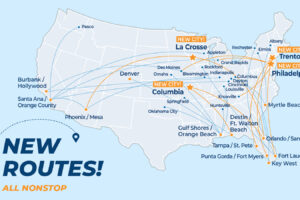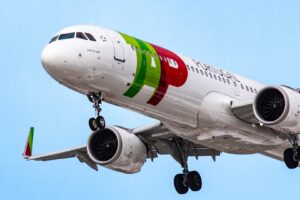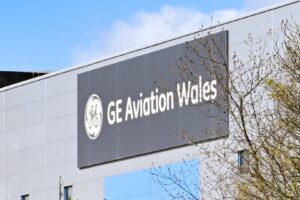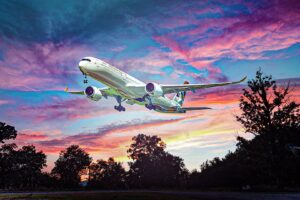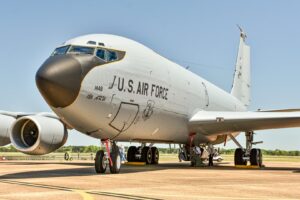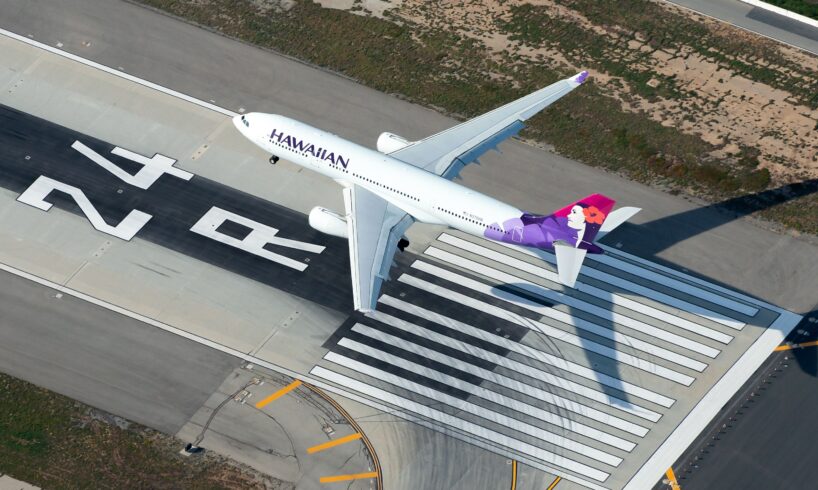
Aviation is centered around safety
, first and foremost. Flying involves a lot of variable factors, with complex systems and a complicated environment for humans to manage, which is why our safety system works to minimize the risks of flying as much as possible. This falls on manufacturers, workers, governments, and airlines.
An aviation accident is an event that causes serious injury, death, or damage to an aircraft, while an aviation incident is an occurrence in which safety is compromised, but does not result in an accident. Incidents are much more common, but accidents can still occur, despite airlines’ best efforts. These are a few of the many airlines that have managed to stay accident-free throughout their history.
Hawaiian And Other Prominent Carriers
Accidents used to be much more common in the past, so it’s no surprise that most of the world’s accident-free airlines are younger. This is why it’s especially impressive that Hawaiian Airlines
, a carrier that first flew in 1929, has never had an accident in its entire history. There have been a handful of incidents, such as a runway overrun in 2000 and a few cabin smoke events, but no Hawaiian aircraft has ever been written off, and no one has ever lost their lives while flying this carrier in an accident.
Photo: Vincenzo Pace | Simple Flying
Some of the world’s budget airlines have also managed to stay accident-free. In the US, JetBlue
, Frontier Airlines
and Spirit Airlines
have recorded incidents, but no hull losses or fatalities. EasyJet and WizzAir have also been accident-free throughout their history. Air India, its subsidiary Air India Express, and regional carrier Alliance Air are the only Indian carriers to have had accidents, while Asian airlines like EVA Air, Hainan Airlines, and Scoot have also maintained a near-flawless record.
The same is true for Virgin Australia, Etihad Airways, and Qatar Airways. Qatar lost two aircraft to fires while parked on the ground with no passengers, while Etihad wrote off an Airbus A340-600 after the plane was damaged during pre-delivery checks. Virgin Australia, meanwhile, has never lost an aircraft or experienced any loss of life onboard its planes.
The Impressive Hawaiian Airlines Safety Record
Photo: GingChen | Shutterstock
There are many other airlines that haven’t experienced an aircraft accident. In fact, it’d be easier to list airlines that have had serious accidents than those that haven’t. What’s especially noteworthy about Hawaiian, however, is that it was founded in 1929, when crashes were much more common. Hawaiian Airlines is the oldest airline in the world that has never experienced an accident.
Of course, the company has had its fair share of safety-related incidents. In 2000, a McDonnell Douglas DC-10 overran a runway in Tahiti. No one was hurt. In 2019, an Airbus A321neo landed in Honolulu with smoke pouring into the cabin. Several people were taken to the hospital to be treated for smoke inhalation, but this was the end of it.
Severe turbulence struck an A330-200 just a few years ago, injuring dozens and damaging parts of the cabin, but this is becoming more common by the day.
Type
In service
Airbus A321neo
18
Airbus A330-200
24
Airbus A330-300P2F
10
Boeing 717-200
19
Boeing 787-9 Dreamliner
3 (+9 to be added in the coming years)
Technological improvements have meant that it’s extremely rare for aircraft to just stop working. Back in the day, engines were especially problematic, as piston motors were far less reliable than jet engines. Furthermore, aircraft safety systems were far less robust, meaning that flight crews had fewer resources at their disposal. It was simply more dangerous to fly back then versus today, which is why so many newer airlines have near-spotless records compared to older carriers.
Related
How These United Airlines Boeing 767-300ER Pilots’ Quick Thinking Kept Everyone Safe
The touch-and-go landing, or go-around, provided some dramatic video footage.
How Aviation Safety Has Advanced
Photo: Markus Mainka | Shutterstock
Compared to modern jet airliners, the piston-powered planes of the post-war era are ancient. Beyond the switch from propellers to turbofans, aircraft technology has advanced so much that flight crews have gone from five to two. Digital displays, automation of inflight functions, advanced alert systems, and fly-by-wire have transformed airliners from a manual machine to a flying computer. In a way, a modern jet essentially acts as a third pilot, quickly providing more information to the humans up front and making tasks easier.
Planes have also become more self-reliant. The development of new advisory systems like GPWS and TCAS allows aircraft to detect external threats to the flight, while advanced EICAS systems not only advise on internal issues but also provide resolutions. Furthermore, although cockpit crews have gotten smaller, what has remained constant is that there are always two pilots who focus on flying the plane, which adds redundancy.
Aircraft
Flight crew makeup
Lockheed Constellation
Captain, First Officer, Flight Engineer, Navigator, Radio Operator
McDonnell Douglas DC-10
Captain, First Officer, Flight Engineer
Airbus A350 XWB
Captain, First Officer
Flight crews have also gotten more advanced. While humans have remained largely the same, there’s been a notable shift in cockpit dynamics, as First Officers are now regarded as equals with Captains, rather than being subordinates. Crew Resource Management (CRM) has allowed for more efficient workload management, and copilots are now encouraged to speak up if their Captain makes an error. Current safety culture also promotes the acceptance of errors, with a focus placed on learning from the mistake rather than punishment.
What Contributes To An Airline’s Overall Safety
Photo: MC MEDIASTUDIO | Shutterstock
Various news sources online rank certain airlines according to a wide variety of safety criteria. However, the reality is that most airlines are about the same in terms of safety. Crew training and maintenance procedures are largely standardized across most carriers, while regulators are usually quite strict. Most airliners in service today also feature glass cockpits with EICAS/ECAM systems, while other features that contribute to safety are mandated by law, such as TCAS.
Last year saw the FAA perform prominent safety audits of two large airlines: United Airlines
and Southwest Airlines
. These occurred after both carriers experienced a string of unusual incidents. The FAA found nothing. There was no evidence of poor safety protocols at either carrier, meaning that the repeated incidents were likely just random chance. After all, these two are some of the largest airlines in the world, and they are much more likely to experience an incident compared to Hawaiian, which only has a fleet size of 74.
While most airlines are equally safe to fly on, there are certainly riskier carriers. Organizations like the FAA and EASA often ban airlines from entering their airspace on the grounds of poor safety standards, such as the FAA’s nearly ten-year ban on Thai carriers, which was recently lifted. Furthermore, many airlines that are sanctioned are unable to obtain appropriate parts or purchase new aircraft, resulting in planes that aren’t maintained well. Furthermore, some airlines are known for having questionable operating procedures and hiring standards.
Related
5 Years Ahead: FAA Says A Modernized NOTAM System Will Be Deployed This Fall
The FAA views this as the first step as it works towards upgrading the larger US aviation infrastructure.
Risks To Aviation Safety
Photo: Vincenzo Pace | Simple Flying
Safety has progressed immensely over the last century of commercial flying. However, while airlines have become safer than ever, some risks are more structural. As an example, the January collision between an American Eagle CRJ and an Army Black Hawk helicopter is believed to have been caused, in part, by the design of the helicopter route near Washington-Reagan Airport. This route created insanely tight separation margins between passing rotary traffic and approaching airliners, which eventually led to a collision.
Air traffic continues to rise year after year, but existing infrastructure is struggling to keep up. Planes fly closer together, especially during critical phases of flight. Besides the tragic collision, there have been several concerning incidents involving loss-of-separation mid-flight. Some airports, such as San Francisco, are particularly struggling to handle current traffic.
Recent Loss-Of-Separation / Runway Incursions (as per The Aviation Herald)
Date
Silk Way 777F received a TCAS RA to avoid an MNG A330-300P2F departing Hong Kong
Febuary 27, 2025
Southwest 737-800 performs a low-altitude go-around after a Cessna Citation enters the same runway at Chicago-Midway
Febuary 25, 2025
Delta A330-300 and United 737-900ER receive TCAS RAs approaching Phoenix
January 11, 2025
There’s also a shortage of air traffic controllers in the United States. When traffic is as high as it is, not having enough staff increases individual workload and reduces each person’s effectiveness. Looking again at the January collision, helicopters are usually handled by a TCA controller to monitor traffic passing through the airport’s airspace. However, on that night, this responsibility was assumed by the tower controller, who was already working arrivals and departures.
The Rundown
Photo: Nate Hovee | Shutterstock
There’s always room to improve when it comes to aviation safety. However, flying on most airlines is equally safe, and just because Hawaiian hasn’t had a fatal accident doesn’t mean that United, Air France, or Qantas are more dangerous to fly on. With proper maintenance, rigorous pilot training, and robust standards, almost all major airlines are the safest to fly on.
What is concerning is that the current system is starting to crumble under its own weight. It’s become increasingly difficult for infrastructure to keep up with current air travel, largely caused by staff shortages and a lack of investment. Incidents are something that we should learn from to prevent accidents.

